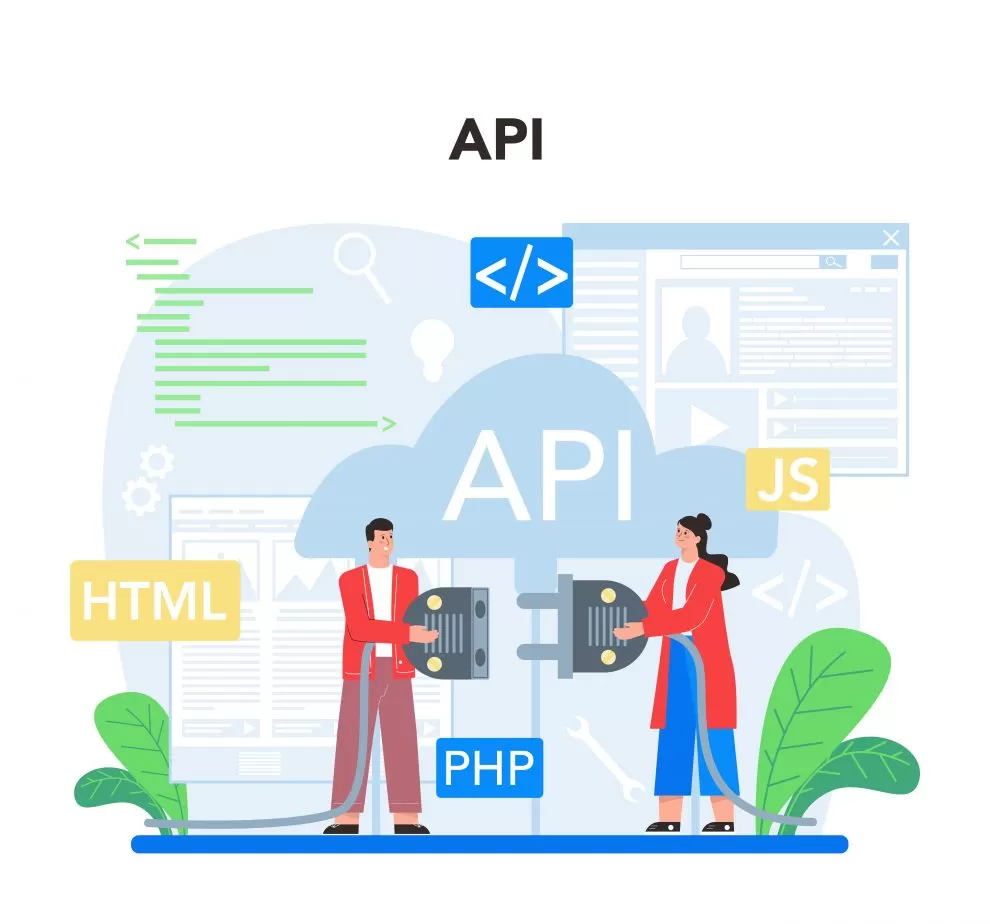In the intricate realm of software development, where interconnectedness reigns supreme, the significance of API Design Principles and Best Practices cannot be overstated. An API, short for Application Programming Interface, serves as the linchpin for communication between diverse software systems. It delineates the methods and data formats that applications employ to converse and collaborate.
Embarking on the journey of comprehending API Design Principles and Best Practices involves constructing interfaces that are not only intuitive and efficient but also forward-thinking. It encompasses a meticulous process of planning, designing, and implementing APIs to ensure seamless communication among various software components.
In this exploration, we will dissect the core tenets of API design and shed light on the best practices that drive its efficacy. We’ll navigate through the nuances of consistency, clarity, and flexibility that shape the very essence of API design. We’ll also discuss challenges and emerging trends that illuminate the path to creating APIs that resonate with the future. So, fasten your seatbelts as we unravel the intricacies of API design in the following chapters.
Defining API Design
API Design Principles and Best Practices form the bedrock of a well-functioning digital ecosystem. They are the guiding stars that steer developers in crafting interfaces that not only meet current needs but also anticipate and adapt to the demands of the ever-evolving technological landscape. At the heart of these principles lies the quest for intuitiveness, striving to create APIs that are as natural to use as they are powerful.
To delve into the realm of API Design Principles and Best Practices is to embrace a delicate dance between art and science. The process commences with meticulous planning, where every endpoint, method, and parameter is thoughtfully considered. This phase sets the stage for the ensuing design, where each component is sculpted with precision, keeping the end-user experience at the forefront. Finally, the implementation phase brings the design to life, transforming concepts and blueprints into functional APIs that facilitate smooth interactions and data exchanges.
Beyond the mere act of facilitating communication, these principles nurture the foundation of innovation. A well-crafted API not only connects systems but inspires creativity by providing a playground for developers to experiment, build, and extend functionalities. It fosters a collaborative environment where developers can leverage existing APIs to craft novel solutions, amplifying the potential and reach of technology.
Core API Design Principles
Consistency and Standardization:
Consistency stands as a fundamental pillar in API design, a principle underscored by API Design Principles and Best Practices. It advocates for a uniform structure, standardized naming conventions, and consistent data formats across all endpoints. This uniformity simplifies the understanding and utilization of the API, alleviating the need for developers to repeatedly reference comprehensive documentation. Like the steady rhythm in a melody, a consistent API structure allows developers to anticipate and seamlessly navigate its pathways, fostering efficient integration and interaction between various software components in the digital landscape.Clarity and Simplicity:
Usability is at the core of effective API design, embodying a principle advocated by API Design Principles and Best Practices. Clear and simple naming conventions function like signposts on a well-marked trail, guiding developers in their journey through the API. Removing unnecessary complexity is akin to trimming the excess branches off a tree, ensuring the main path is clear and unobstructed. Comprehensive documentation acts as a comprehensive guidebook, equipping developers with the knowledge and insights needed to utilize the API seamlessly, fostering a user-centric experience and promoting wider adoption.Flexibility and Extensibility:
Flexibility and adaptability are pivotal in API design, central tenets advocated by API Design Principles and Best Practices. Just as a well-built house allows for extensions and renovations, a flexible API accommodates future changes and additions seamlessly, preserving the existing functionality. Designers, acting as architects of digital landscapes, must foresee potential changes and blueprint the API architecture accordingly. It’s akin to planning a city with room for growth, ensuring that as technology advances and requirements evolve, the API remains a robust and enduring conduit for efficient communication and collaboration between diverse software systems.
Also Read: How to Fetch GraphQL Data in Next.js
Best Practices for Effective API Design
Versioning:
Versioning is crucial in API design. It offers a clear track of changes and maintains backward compatibility, ensuring a seamless transition for existing users when integrating new features. API Design Principles and Best Practices highly stress this practice for effective API management and evolution.Authentication and Authorization:
API security is paramount. Strong authentication and authorization mechanisms are imperative to control access and safeguard sensitive data. Embracing industry-recognized standards such as OAuth significantly enhances security, a fundamental emphasis in API Design Principles and Best Practices.Error Handling:
Meaningful error messages are pivotal in a robust API. They serve as signposts for developers, swiftly directing them to identify and resolve issues. API Design Principles and Best Practices accentuate the need for well-defined error codes and messages, enriching the developer experience by providing clarity and expediting the debugging process.Rate Limiting:
Rate limiting is essential to maintain fair API usage. By restricting requests per timeframe, it prevents abuse and optimizes performance for all users, a core principle in API Design Principles and Best Practices. This practice ensures equitable access, preserving the API’s efficiency and reliability across the user spectrum.Monitoring and Analytics:
Continuous monitoring of API performance is key. Analytics offer insights into usage patterns, empowering data-driven decisions for optimizations and enhancements. API Design Principles and Best Practices underscore this proactive approach, aiding in refining the API’s efficiency and responsiveness to better cater to user needs.
Overcoming Common API Design Challenges
Over-Engineering:
Beware of over-engineering your API. Keeping it simple and aligned with the project’s current needs will prevent unnecessary complexity that can hinder development and usage.Lack of Proper Documentation:
Insufficient or unclear documentation can be a significant obstacle for developers. Provide thorough and up-to-date documentation to guide users effectively and enhance the usability of your API.
Future Trends in API Design
API design is a dynamic field, constantly evolving to meet the demands of modern software development. Some emerging trends in API Design Principles and Best Practices include:
GraphQL:
GraphQL, gaining momentum as a REST API alternative, empowers clients to request specific data, promoting operational efficiency and system flexibility. This represents a notable evolution in API Design Principles and Best Practices, steering towards a more tailored and efficient approach to data retrieval and utilization.Serverless Architecture:
With the ascent of serverless computing, APIs are aligning with this architecture. Serverless APIs are cost-effective and highly scalable, seamlessly adapting to fluctuating workloads. This shift embodies a key evolution in API Design Principles and Best Practices, optimizing resource utilization and enhancing overall efficiency in modern computing paradigms.
Building for Success
Understanding the User:
Understanding users is pivotal in API Design Principles and Best Practices. Delving into their requirements, workflows, and challenges empowers tailored API development, elevating user satisfaction and fostering wider adoption. This user-centric approach marks a significant tenet, emphasizing the importance of empathetic design in creating effective and impactful APIs.Performance Optimization:
Efficiency is paramount in API design. Designers must prioritize optimizing performance to reduce response times, minimize latency, and seamlessly handle a high volume of concurrent users—maintaining optimal performance underpins API Design Principles and Best Practices, ensuring a responsive and efficient user experience even during peak usage.
Also Read: How to Perform Backend Testing
Implementing API Best Practices
Pagination for Data Retrieval:
Handling vast data sets, pagination is a vital technique. It involves presenting results in manageable subsets, improving response times, and alleviating server load. This practice aligns with API Design Principles and Best Practices, optimizing performance and enhancing the overall user experience, especially when dealing with extensive data retrieval operations.Caching Mechanisms:
Implement caching strategies to minimize redundant requests and boost API response time. By caching frequently accessed data at the client’s end, you reduce the need for repetitive server requests. This aligns with API Design Principles and Best Practices, amplifying overall performance and providing users with faster, more efficient interactions with the API.
The Human Side of API Design
Feedback Loop:
Integrate a feedback loop within your API design process. Actively solicit input from developers utilizing your API. Gaining insights into their experiences and challenges can pave the way for significant improvements, ensuring your API aligns with users’ expectations and needs. This user-centric iterative approach is fundamental to API Design Principles and Best Practices, fostering continuous enhancement and refinement based on real-world usage.Community Involvement:
Engaging with the developer community is vital. Host webinars, forums, or meetups centered around your API, fostering collaboration and providing a platform for developers to share insights. This engagement cultivates a dynamic community, promoting continual API improvement—an embodiment of collaborative spirit in API Design Principles and Best Practices. It amplifies collective intelligence, propelling the API towards excellence and addressing diverse user needs.
Security in API Design
Data Encryption:
Prioritize data security by encrypting sensitive data transmitted through the API. Utilize industry-standard encryption algorithms to uphold data confidentiality and integrity. This unwavering focus on security aligns with API Design Principles and Best Practices, instilling trust and safeguarding critical information, a crucial aspect in the rapidly evolving digital landscape.Role-Based Access Control:
Implement role-based access control for enhanced security. Tailor API access based on users’ roles, allowing authorized actions only. This systematic approach, a fundamental aspect of API Design Principles and Best Practices, fortifies overall security, ensuring that users operate within defined boundaries, bolstering data protection and system integrity.
Optimizing API Usability
Intuitive Naming Conventions:
Select clear, intuitive names for endpoints, methods, and parameters in your API. Opt for names that precisely convey functionality and purpose. This adherence to clarity is a cornerstone of API Design Principles and Best Practices, facilitating developers in comprehending API usage swiftly and accurately. Well-chosen names act as a roadmap, aiding in seamless integration and optimal utilization.Predictable Behavior:
Uniformity and predictability stand as essential facets of API behavior. Best practices underscore the necessity for a consistent response, enabling developers to foresee how the API will operate in various environments and circumstances. This uniform behavior streamlines development, empowering developers to code with confidence, ultimately facilitating efficient integration and minimizing potential errors.
The Ethical Dimension of API Design
Data Privacy:
Prioritize data privacy in API design. Minimize data collection and transmission, ensuring only essential information is gathered. Obtain explicit consent from users before accessing their data, aligning with stringent privacy standards. This conscientious approach mirrors the core tenets of API Design Principles and Best Practices, building trust and upholding user privacy in an age where data protection is paramount.Transparency:
Transparency is vital in API design. Clearly communicate how data collected through the API will be utilized. Sharing comprehensive data usage policies with users fosters trust and upholds ethical practices. This commitment to openness is in line with API Design Principles and Best Practices, fostering a relationship of trust and respect with users, crucial in the realm of data privacy and ethics
Conclusion
API Design Principles and Best Practices stand as the guiding beacons in the realm of modern software development. They encapsulate a profound commitment to efficiency, usability, security, and ethical conduct. As technology continually evolves, so does the significance of well-crafted APIs that seamlessly connect diverse systems and facilitate optimal communication.
Efficiency remains at the core of API design, driving the need for consistent structures, predictable behaviors, and optimized performance. Usability is equally crucial, demanding clear naming conventions, intuitive designs, and a user-centric feedback approach. Security is non-negotiable, urging the implementation of encryption, access controls, and privacy measures to protect both data and users.
As we navigate this dynamic landscape, it is essential to embrace emerging trends such as GraphQL and serverless APIs. These innovations reflect the adaptability and scalability demanded by modern computing paradigms. Moreover, engaging with the developer community, prioritizing data privacy, and maintaining transparency amplify the trust and collaboration necessary for sustainable growth.















